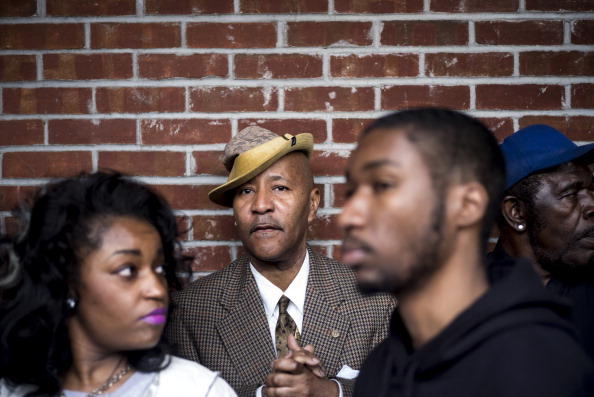When I joined Agence France-Presse (AFP) in April 2007 as a computer technician and budding photojournalist, I asked the chief editor for names of photographers to keep an eye on. Some of the agency’s key players were a given, but she mentioned then-stringer Brendan Smialowski and stopped, as if there were nothing more to talk about. I asked why she’d name a stringer in such a crowded market as Washington, D.C., and not back her argument with an explanation. She simply replied, “Just go look at his stuff.”

AFP Photo/Brendan SMIALOWSKI
A cursory Google image search of Smialowski’s work will leave you wondering. The pictures returned are simple D.C. photojournalism fodder of dreary politicos and pundits. They don’t even follow the trusty photojournalism formula of “establisher, medium, action, reaction, reverse, close-up, and closing.” I was thoroughly confused. Not until I visited AFP’s ImageForum (or Getty Images for distribution in the USA) did I get his full story.
Smialowski, however much he dislikes the term, definitely “makes” his images. In journalism school we are taught never to amputate via judicious use of the crop tool, but Smialowski does exactly that with shrewd disregard and masterful results. He’s extremely reliable as a photographer in the sense that he’ll always get usable frames, but then he’ll also supply images that make you pause. He catches the aforementioned subjects in unusual and human-like moments which we don’t regularly associate them with. Smialowski’s timing, framing by using existing objects as gobos, taking off-horizon shots, and combining the use of nearby reflective surfaces and backlighting make for entertaining, creative, and artfully eloquent photographs.

AFP Photo/Brendan SMIALOWSKI
We met at Chinatown Coffee Co. to discuss some of his selected images. “The taxis in the floodwater is a great way to illustrate a flood in the U.S. for a foreign audience,” says Smialowski. “Everybody knows a yellow taxicab goes with New York, so a parking lot full of floodwater and taxicabs is a pretty simple image that gets the point across very effectively.”

AFP Photo/Brendan SMIALOWSKI
He continues, “However, I got there kind of late. A few people made that picture. By the time I got there the water had receded a little bit. For me, this was a case where coming late kind of worked out to my favor in the sense that the water had gone down just enough that it had become a mirror. So in the picture you see just a little hint of this beautiful blue sky, you know the sky you get after a massive storm, and it played very well with the yellow cabs. Visually that’s a very striking thing to get.”
We also talked about how in the world a full-time working photojournalist had the opportunity to ditch his Nikon D4 and use a 4×5 large format camera to cover the news in 2013. I asked if he was a modern Mathew Brady. “I’m a fan of black and white photography. Black and white photography is about ‘simple.’ It’s about visual storytelling and there are no distractions.”
Smialowski says that even with his DSLR, “I shoot raw with the camera set to black and white. What that does is it tricks the camera into creating a black and white preview, although the color data is still there. So when it comes to the news image I’ve got the full color, and no boss is going to get mad at me, but when I’m looking at them and editing or chimp on the back of the camera I’m going to see a black and white picture. That’s because I just want to see the subject in a very simple way and I want my pictures to be composed that way. I don’t want to forget how to make a strong black and white photo.”

AFP Photo/Brendan SMIALOWSKI
Specifically on shooting 4×5, he says, “That, to me, was a quiet revolt. I knew I could get away with it, because I discussed it with my boss, but I knew I could go shoot black and white and not worry about the competition, not worry about anything. The irony of it is it was a D.C. assignment, a golf tournament where my competitors are the same guys I work literally elbow-to-elbow with every day at the White House, Capitol Hill, and the Pentagon. I decided to go with the 4×5 large format camera and at times still be elbow-to-elbow with them.”
Here’s hoping for a lot more revolts.
More of Smialowski’s work can be found on his website, smialowski.org and maybe in a newspaper near you.